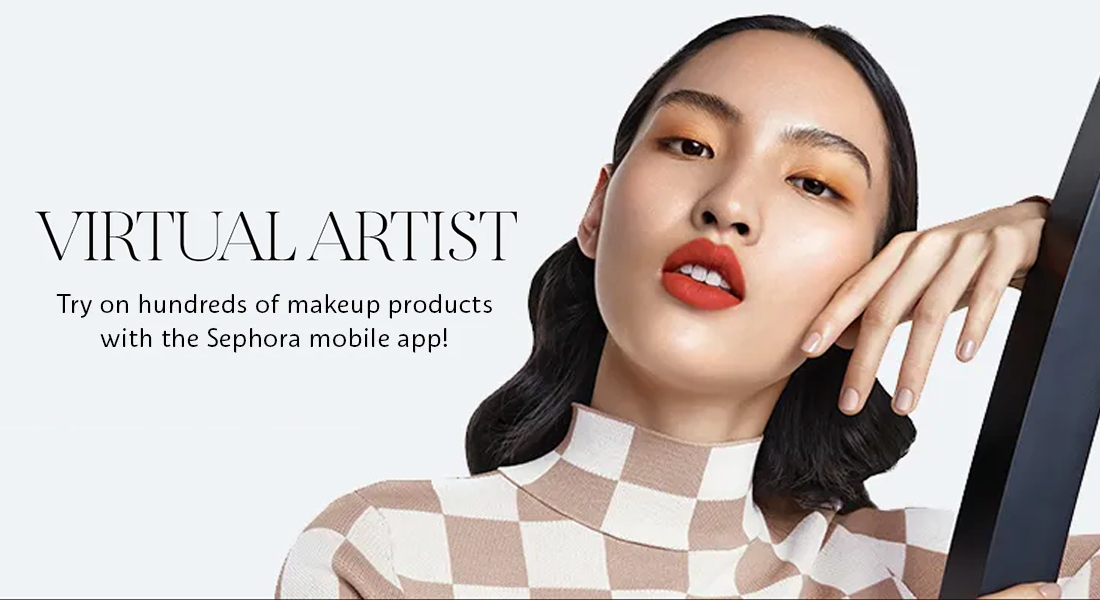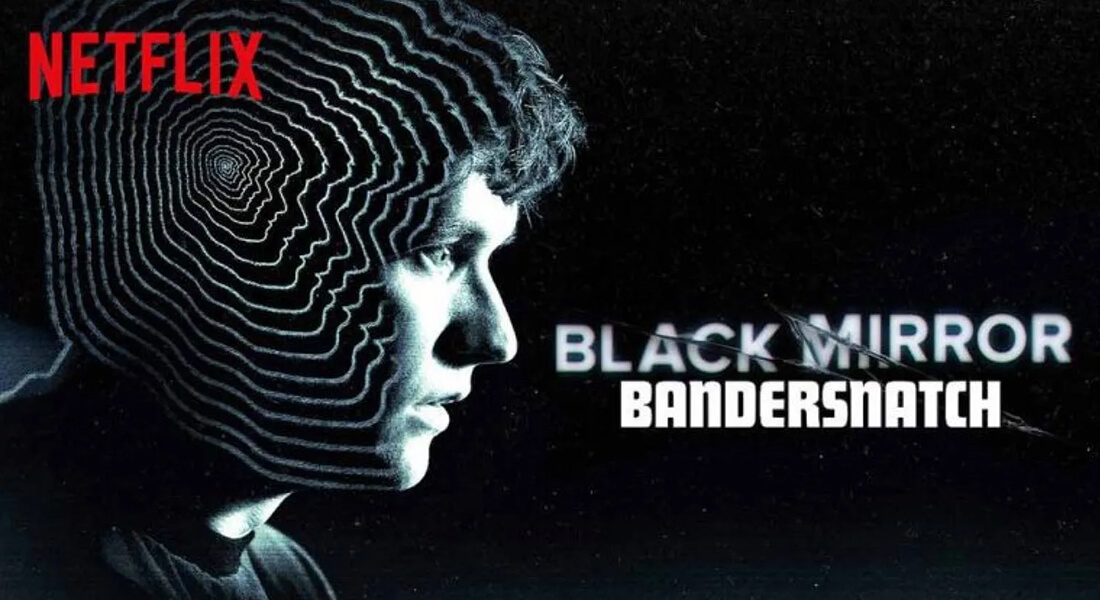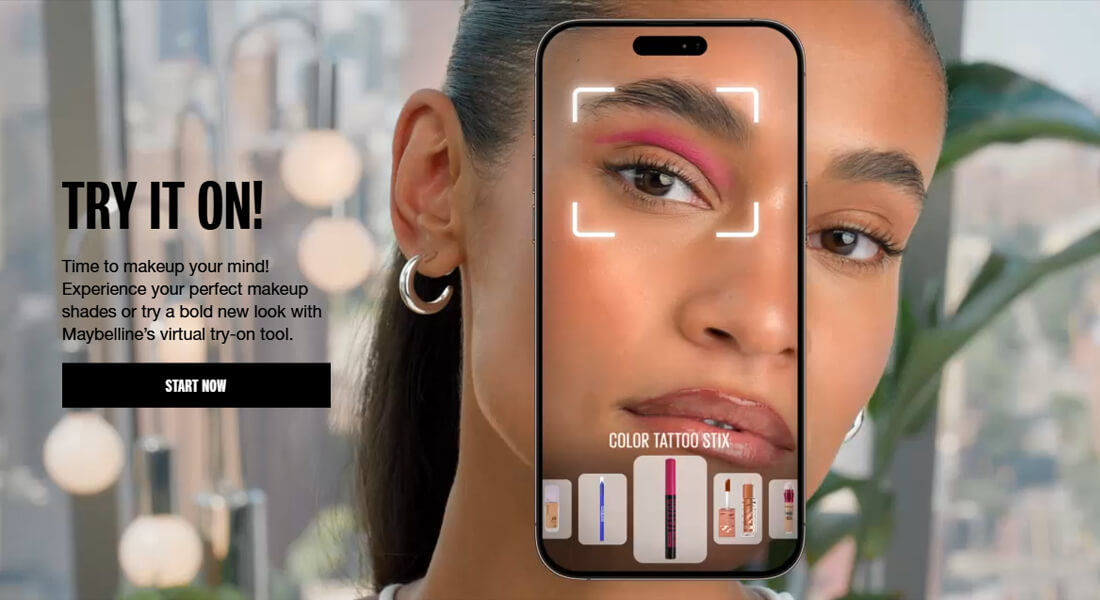
Are you searching for real-world proof that interactive videos can deliver serious results? You’re in the right place.
In this comprehensive roundup, we’ll explore ten standout interactive video campaigns that go beyond surface-level engagement. These aren’t just slick-looking tech experiments they’ve been crafted with strategy in mind and have delivered measurable outcomes. We’re talking about campaigns that have generated real conversions, whether that means more leads, increased product purchases, boosted sign-ups, or higher viewer engagement.
What makes these examples even more valuable? Each one comes with a key takeaway a practical insight or tactic that you can apply directly to your own interactive video projects. Whether you’re a marketer looking to qualify leads more effectively, an ecommerce brand aiming to drive sales, or a training manager hoping to increase learner engagement, you’ll find something here that’s directly relevant to your goals.
By studying what’s worked for others, you can fast-track your own success and avoid costly trial-and-error.
Let’s dive in and explore how interactive video is being used to truly convert and how you can replicate that success for your brand.
Let’s jump in.
1. Deloitte: Will You Fit into Deloitte?

Deloitte took a bold step in recruitment by creating an interactive, branching video experience that simulates a typical workday at the company. Instead of just telling candidates what it’s like to work there, they let viewers live it. At various decision points throughout the video, users are prompted to make choices such as how to respond to a client email, handle a team conflict, or prioritise their schedule. These decisions influence how the story unfolds and ultimately reveal whether the viewer is a cultural fit for Deloitte.
The video doesn’t just showcase the company’s work environment; it invites candidates to test their values, behaviours, and decision-making styles against real-world scenarios. The experience is personalised, engaging, and subtly informative all without a single form field or questionnaire. It’s a brilliant way to let people self-assess their compatibility before applying.
Why it works:
It’s immersive, intuitive, and emotionally intelligent. Viewers feel like they’re stepping into a day at Deloitte, making the recruitment process more memorable and efficient.
Takeaway:
Don’t just tell your audience what your brand stands for let them experience it. When people can interact with your story and see themselves in it, you build a deeper connection and attract better-qualified leads or candidates.
2. Honda: The Other Side
Honda’s “The Other Side” campaign is a masterclass in interactive storytelling and brand repositioning. At first glance, it appears to be a straightforward video of a father doing the school run in a white Honda Civic. But there’s a twist when viewers hold down the ‘R’ key on their keyboard, the story instantly switches to an adrenaline-pumping night-time narrative, where the same man is driving a red Civic Type R in a getaway-style chase.
The video flips back and forth between the two storylines seamlessly, depending on whether the key is pressed or not. It’s smooth, clever, and packed with contrast. The mundane vs. the thrilling. The everyday vs. the extraordinary. And that’s exactly the point Honda isn’t just selling a car, it’s selling dual identities. One vehicle. Two personalities.
Why it works:
The interactivity isn’t just a gimmick it enhances the emotional impact of the story. The viewer becomes an active participant, discovering how the same car can fit into dramatically different lifestyles. It’s engaging, memorable, and deeply aligned with the product’s key message: versatility and performance in one.
Takeaway:
Consider using dual narratives or contrasting storylines to highlight different facets of your product or service. When executed well, this approach can resonate with multiple audience segments and leave a lasting impression. It also invites repeat viewing, as users go back to explore both paths in full.
3. Sephora: Virtual Artist

Sephora’s Virtual Artist is a shining example of how interactive video and augmented reality (AR) can merge to create a truly personalised shopping experience. Available through Sephora’s mobile app and website, this feature allows users to try on thousands of makeup products in real time using their phone or computer camera. Lipsticks, eyeshadows, foundations you name it. With just a few taps, customers can see exactly how different shades and styles will look on their own face, without ever stepping into a store.
This isn’t just fun it’s functional. For many online beauty shoppers, the biggest hurdle is uncertainty. “Will this colour suit me?” “What does it look like on someone with my skin tone?” Sephora’s Virtual Artist removes that guesswork. It boosts user confidence and significantly reduces the risk of post-purchase regret. It also increases engagement time, encourages product discovery, and, not surprisingly, improves conversion rates.
Why it works:
It blends convenience with personalisation. By allowing users to interact with products in a meaningful way, Sephora turns shopping into a tailored experience. The seamless integration of AR into the video interface feels natural and empowers customers to make informed choices.
Takeaway:
When your product changes how someone looks or feels, give them the chance to see the transformation before buying. Whether you’re in beauty, fashion, home décor, or even automotive, interactive try-before-you-buy tools can dramatically improve trust, satisfaction, and sales.
4. Netflix: Bandersnatch

Netflix made headlines with Bandersnatch, a groundbreaking interactive episode of the Black Mirror series. Instead of watching a linear story unfold, viewers were put in the driver’s seat making critical plot decisions for the main character in real time. From what cereal he eats in the morning to life-altering choices with serious consequences, every interaction branched the story in a new direction.
With multiple endings and dozens of decision points, Bandersnatch was more than just an episode it was an immersive experience. Viewers became co-authors of the narrative, replaying it several times to explore alternative outcomes and hidden paths. This innovative format created a buzz across social media, inspired fan theories, and significantly increased time-on-platform.
But the genius of Bandersnatch goes beyond entertainment. It demonstrated that interactive, story-driven content can capture attention, deepen emotional involvement, and foster repeat engagement. And while Netflix used it for fiction, the underlying principles apply to all kinds of content from branded storytelling to interactive explainers and training tools.
Why it works:
It’s immersive, addictive, and inherently rewatchable. The novelty of choosing your own story path keeps viewers invested, while the branching narrative structure encourages exploration and discussion.
Takeaway:
Story-driven interactivity isn’t just for film and TV. Brands across industries can use similar choose-your-own-adventure techniques to boost engagement, extend time-on-page, and build stronger emotional connections. Whether you’re telling a brand story, explaining a complex topic, or educating an audience, interactive storytelling is a powerful way to make it stick.
5. Maybelline: Choose Your Look

Maybelline’s Choose Your Look campaign is a prime example of how interactivity can guide viewers down a highly personalised path and turn engagement into conversion. The interactive video begins with a simple but powerful prompt: choose the makeup look you want to achieve. Options might include bold evening glam, natural everyday wear, or a fresh dewy finish. Based on the viewer’s selection, the video branches off into a custom tutorial tailored to that specific style.
But it doesn’t stop at inspiration. As the tutorial unfolds, viewers are introduced to each product used in the look foundation, eyeliner, mascara, lipstick with clickable links that lead directly to product pages. This seamless blend of content and commerce means that users don’t just learn how to create the look they’re actively guided to buy the tools to do it themselves.
This format works exceptionally well for beauty brands. It allows customers to engage with content that reflects their individual preferences while making the journey from viewer to buyer completely frictionless.
Why it works:
It’s both personalised and practical. The viewer feels like the video was made for them, which increases attention and trust. And by integrating tutorials with shoppable elements, Maybelline turns content into a direct sales channel without making it feel like a hard sell.
Takeaway:
Use interactivity to create a choose-your-own-journey experience that leads people straight to what they want. Whether it’s through style guides, product demos, or tutorials, helping viewers self-select improves engagement and increases the chances they’ll convert.
6. Allianz: Interactive Insurance Walkthrough
Insurance can be a tough sell not because people don’t need it, but because it’s often confusing, full of jargon, and hard to compare. Allianz tackled this head-on with an interactive video walkthrough designed to educate users without overwhelming them. The video features clickable hotspots placed strategically throughout the experience. When viewers hover over or click on these spots, pop-up modules appear that explain key terms, policy options, and benefits all in plain, accessible language.
Rather than dumping all the information at once, Allianz breaks it down into digestible, user-controlled chunks. Viewers can explore topics at their own pace, revisit parts they didn’t understand, and skip anything that’s not relevant to their situation. This format also helps answer frequently asked questions in real time, making it feel less like a sales pitch and more like a helpful guide.
The end result is a smarter, smoother experience that builds trust while empowering customers to make informed decisions something particularly crucial in an industry where clarity equals confidence.
Why it works:
It turns a traditionally static, text-heavy process into an interactive journey that feels guided and user-friendly. Instead of forcing viewers to scroll through long policy documents, Allianz gives them control and simplifies the decision-making process through contextual, just-in-time learning.
Takeaway:
If your product or service involves complexity whether it’s financial services, healthcare, or tech interactive hotspots and modular content can make a huge difference. They help break down intimidating information into manageable parts and give users exactly what they need, when they need it.
7. Asda: Shoppable Holiday Video
Asda brought the festive spirit to life with an innovative holiday-themed shoppable video that blurred the line between content and commerce. Designed to feel more like a fun seasonal advert than a traditional online catalogue, the video featured a lively holiday scene filled with decorations, party outfits, food, and gifts. But here’s the twist: every featured product was interactive. Viewers could click on individual items be it a sparkly jumper, a festive pudding, or a decorative wreath and instantly add them to a virtual shopping basket.
This approach combined storytelling with convenience. Instead of forcing viewers to search the website for products they saw in the video, Asda brought the shop to them within the content itself. The experience felt natural and engaging, turning what could have been passive viewing into active shopping.
It’s a clever tactic, especially around the holidays when consumers are looking for inspiration but don’t always have the time or patience to navigate multiple pages. The interactivity created a sense of immediacy and reduced the steps between seeing and buying ideal for capturing those valuable impulse purchases.
Why it works:
It transforms seasonal content into a shopping experience without disrupting the narrative. The integration is subtle yet effective, offering convenience, inspiration, and action all at once. It’s also mobile-friendly, which is crucial during high-traffic shopping periods.
Takeaway:
Shoppable videos are a powerful tool for turning interest into action especially when you’re promoting seasonal, time-sensitive, or trend-driven products. They remove friction, spark spontaneous purchases, and let you meet the customer where they’re already engaged.
8. PwC: Career Explorer
PwC reimagined the traditional careers page by launching Career Explorer an interactive video tool designed to help job seekers discover where they might fit within the company. Instead of scrolling through endless job descriptions, viewers are invited to answer a series of simple, engaging questions about their interests, skills, and work preferences. Based on their responses, the video dynamically tailors the content, showcasing specific roles, departments, and career paths that align with the viewer’s profile.
The experience feels less like a corporate recruitment funnel and more like a guided conversation. It’s not just about listing available jobs it’s about helping users envision themselves in those roles. The video also includes employee testimonials and day-in-the-life glimpses that make the journey feel relatable and human.
By customising the content journey, PwC ensures that potential candidates receive information that’s relevant to them cutting through the noise and keeping their attention. For a firm with many departments and opportunities, this level of segmentation is key to making the experience feel focused, not overwhelming.
Why it works:
It replaces static, one-size-fits-all recruitment content with a dynamic, user-led experience. Candidates feel seen and understood, and PwC benefits from more engaged, better-informed applicants who already have a clearer sense of where they fit.
Takeaway:
Interactive video is an excellent way to segment your audience and deliver tailored content at scale. By allowing users to self-select their journey, you increase relevance, boost retention, and improve the quality of leads whether you’re recruiting, selling, or educating.
9. Warner Bros: The Lego Movie 2 Trailer Builder
To promote The Lego Movie 2, Warner Bros. flipped the traditional trailer model on its head. Instead of passively watching a pre-cut preview, fans were invited to become the director of their very own trailer using an interactive video tool. Viewers could customise their version by choosing their favourite characters (from Emmet to Batman), selecting different scenes, and even swapping out the background music to match their vibe.
Once their personalised trailer was complete, users could watch their creation and share it with friends on social media. The whole experience was fast, fun, and full of that playful Lego spirit. It wasn’t just a promotional tool; it was a mini creative experience that let fans participate in the movie’s world before it even hit theatres.
This approach did more than entertain. It gave users a sense of ownership over the content, turning them into active participants rather than passive consumers. That emotional investment paid off in the form of increased engagement and massive organic reach thanks to fans proudly sharing their customised trailers online.
Why it works:
It transforms marketing into a creative playground. By tapping into fan creativity and giving them control, Warner Bros. sparked deeper emotional engagement while supercharging the campaign’s viral potential. It also created multiple variations of the trailer, each one reinforcing the brand.
Takeaway:
Let your audience co-create. Whether it’s videos, products, or experiences, giving people the tools to personalise and share makes them more invested in the outcome and far more likely to spread the word. Interactivity isn’t just about clicks; it’s about giving people a reason to care.
10. Barclays: Money Skills Interactive
Barclays took a refreshingly hands-on approach to financial education with its Money Skills Interactive tool an interactive video experience designed to teach everyday people the fundamentals of budgeting, saving, and financial planning. Rather than relying on dry lectures or static PDFs, the experience places users in relatable, real-life scenarios where they must make decisions about how to manage money.
From choosing how to allocate a monthly salary, to handling surprise expenses or prioritising savings goals, users are prompted to think critically and act. Every choice affects the outcome, providing immediate feedback and showing how different decisions lead to different results. It’s not just theoretical it’s practical, immersive learning that meets people where they are.
The brilliance of this approach is how naturally it encourages participation. The format helps people internalise financial principles by doing, rather than just watching. For users who might normally tune out during financial discussions, this interactive format keeps them engaged, informed, and more likely to apply what they’ve learned in real life.
Why it works:
It replaces passive consumption with active decision-making. By grounding the content in realistic scenarios, Barclays makes abstract financial concepts more tangible and memorable. The result? Users who are better equipped and more motivated to take control of their finances.
Takeaway:
When the goal is education, interactivity is your superpower. Don’t just tell your audience what to do give them the opportunity to explore, decide, and learn from their own choices. Participatory learning sticks longer, lands better, and builds trust in your brand as a helpful, human guide.
Final Thoughts: Steal These Ideas (Seriously)
The best interactive videos don’t just entertain they drive real business results. As you’ve seen in the examples above, interactivity can be used to boost conversions across recruitment, retail, entertainment, and more.
Start small. Choose one idea. Add a clickable path, a quiz, or a hotspot. Then test, tweak, and scale. We’d love to help you bring your interactive video ideas to life reach out and let’s make it happen.

